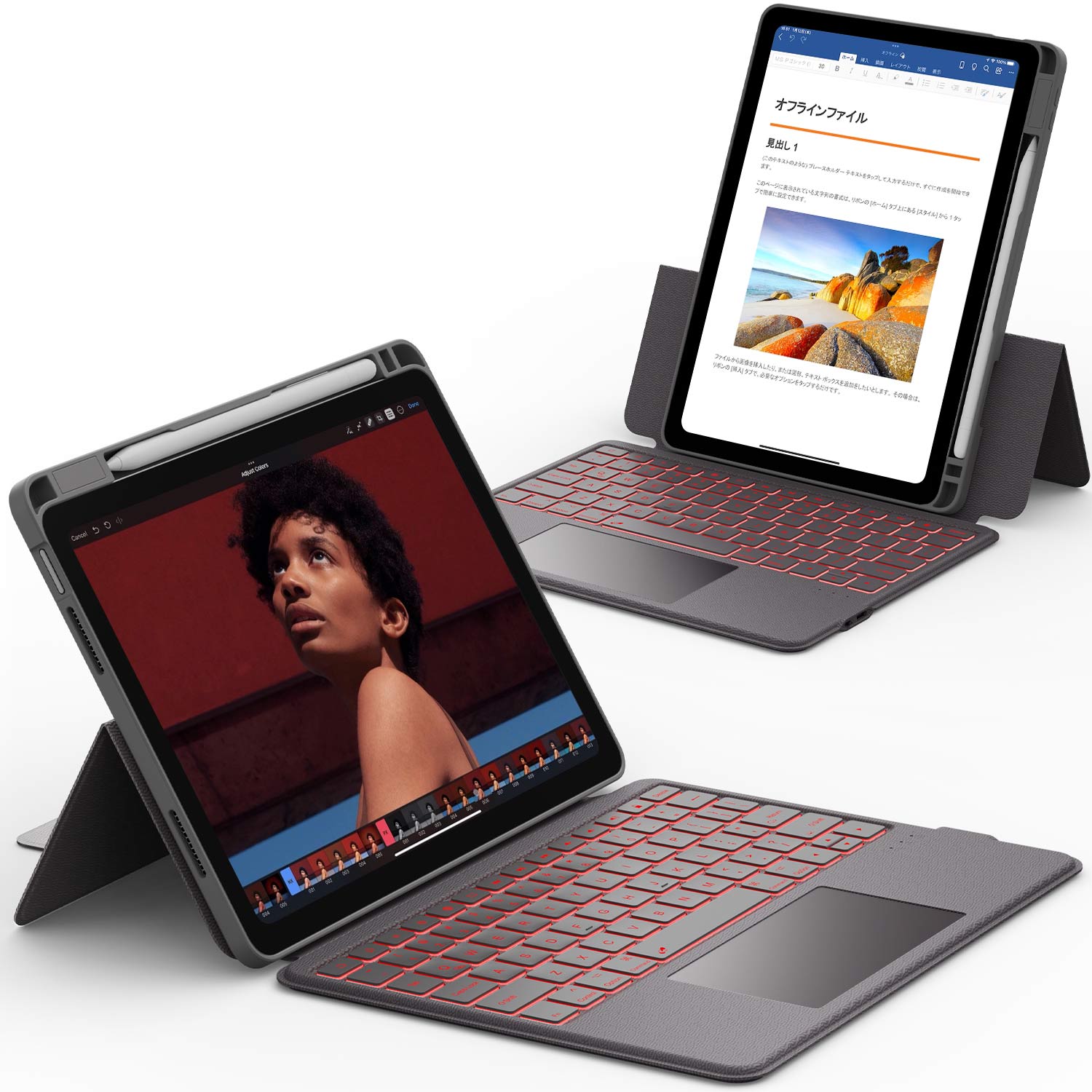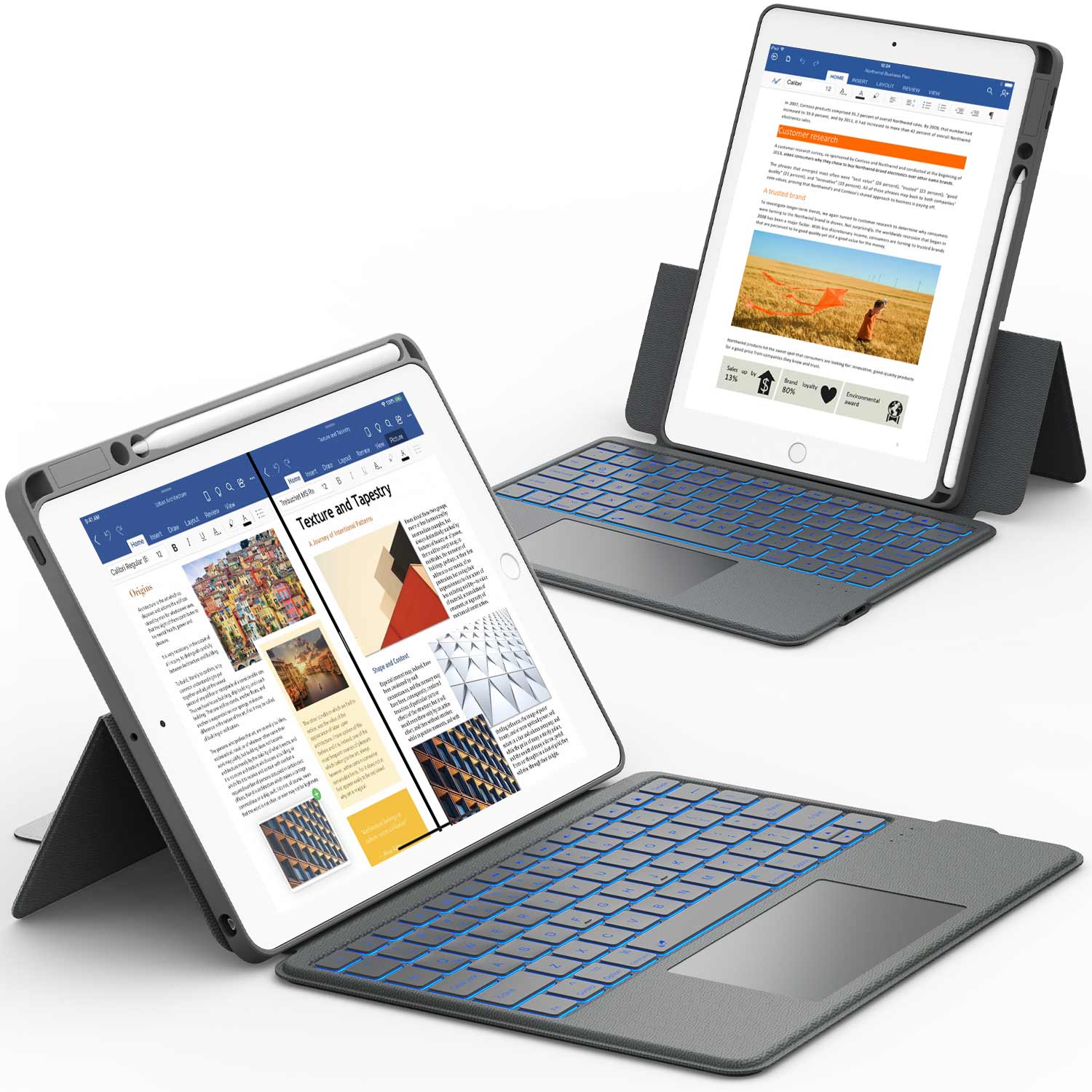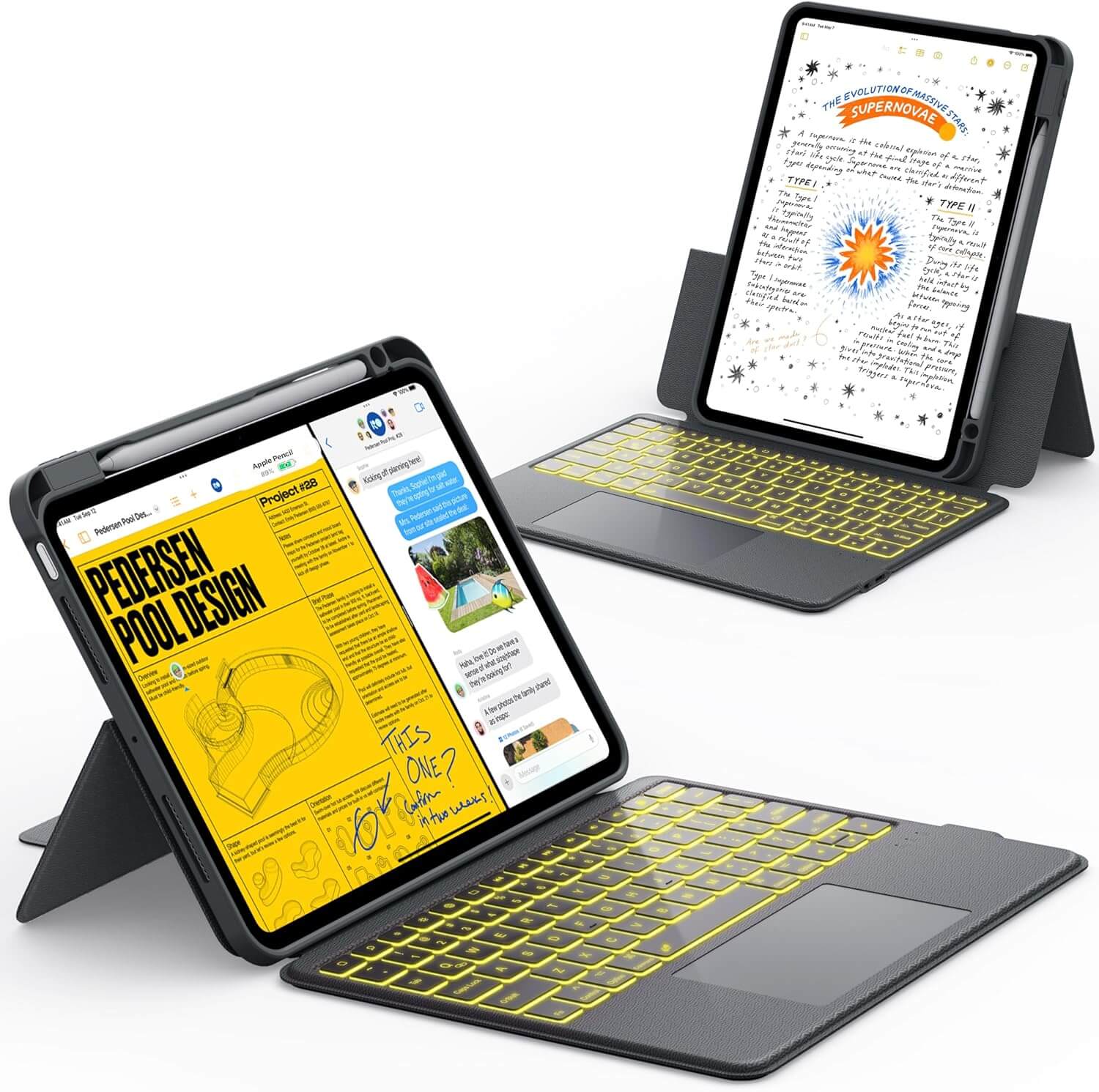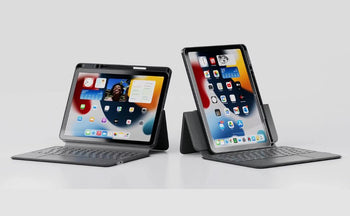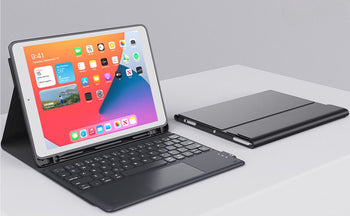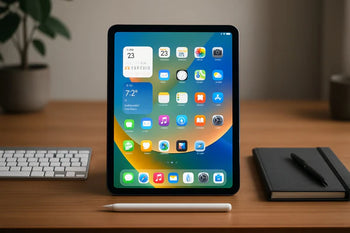Frustrated because videos won’t play on iPad? This issue is more common than it seems and can affect streaming apps, downloaded files, or even videos in Safari. The causes usually come down to internet problems, outdated software, or temporary glitches.
The good news is that most playback issues are easy to fix. A quick restart, update, or settings adjustment often gets videos running smoothly again.
This guide explains the main reasons videos stop working on iPad, step‑by‑step fixes to solve the problem, and simple tips to prevent future playback issues.
Watching videos on a bigger screen makes the experience even better. Explore our iPad cases with HDMI to connect seamlessly to TVs and monitors.
Why Videos Won’t Play on iPad

Videos might not load or play smoothly on your iPad for a handful of reasons. Network problems, outdated software, temporary glitches, or unsupported file formats can all get in the way.
These issues can affect apps like YouTube, Safari, or even local files such as MP4, MOV, AVI, or MKV. Sometimes, it’s just one thing—sometimes, it’s a mix.
Weak or Unstable Internet Connection
Streaming services depend on a stable internet connection. If your Wi-Fi signal is weak or your mobile data keeps dropping, videos may buffer endlessly or never start at all.
Try opening another website or running a speed test to check your connection. If speeds are low, move closer to your router or switch to a better network.
Restarting your router can help when videos refuse to play. You might also want to reset your iPad’s network settings to clear out saved connections that could be causing problems.
If you’re using public Wi-Fi, the network itself might be the issue. Testing with a personal hotspot or mobile data can help you figure out if it’s really the internet at fault.
Outdated iPadOS or App Versions
When your iPadOS or video apps aren’t up to date, compatibility issues can pop up. Streaming apps often need the latest versions to work smoothly with Apple’s updates.
Even built-in apps like Safari or the TV app can stumble if your system software is behind. Sometimes, older software just doesn’t play nicely with newer streaming tech.
Head to Settings > General > Software Update to check for updates. For apps, open the App Store and update them one by one, or turn on automatic updates.
Corrupted Cache or Temporary Glitches
Simple glitches can stop videos from playing. Apps sometimes store corrupted cache files that interfere with playback, leading to freezing, endless loading, or crashes right after you hit play.
Close and reopen the app to see if that solves it. If not, a quick restart of your iPad can clear up temporary issues.
Uninstalling and reinstalling the app can give you a clean slate. This removes old cache files and ensures you’re running the latest version.
If Safari struggles with videos, clear website data under Settings > Safari > Clear History and Website Data.
Unsupported Video Formats or Files
Your iPad supports formats like MP4 and MOV, but older or less common types such as AVI or MKV might not work. If you try to open these in the default player, you could see an error or nothing happens at all.
This often comes up when transferring videos from a PC or downloading files from the web. Apple’s native apps have limits on which formats they’ll handle.
Try a third-party app that supports more formats, or convert the video to MP4 before transferring it. Using apps with broad codec support can save you headaches if you have a big collection of varied files.
Need extra storage or faster transfers for large video files? Check out our iPad cases with USB ports for added convenience and flexibility.
How to Fix Videos Not Playing on iPad

Playback problems usually trace back to weak internet, outdated apps, or small software hiccups. Clearing cached data, restarting the device, or switching apps can often get things working again.
Check Wi‑Fi or Cellular Connection
A weak or unstable connection is a top reason videos won’t load. If you see endless buffering, test your connection speed by visiting a speed test site or using an app.
Switch between Wi‑Fi and cellular data to see if the problem changes. If videos play fine on one but not the other, the issue probably lies with your router or network.
Restart your router to clear out temporary errors. If you’re on public Wi‑Fi, the network may block certain services—try switching to mobile data or another connection. You’ll usually need at least 5 Mbps download speed for smooth streaming.
Restart or Force Restart the iPad
Restarting your iPad clears out temporary system glitches. Hold the top button until the power slider appears, drag it to turn off, wait, then press the top button again to turn it back on.
If that doesn’t help, try a force restart: quickly press and release Volume Up, then Volume Down, then hold the Top button until you see the Apple logo.
Force restart won’t erase your data—it just refreshes things more deeply than a regular restart. This step often helps with freezes, audio sync problems, or stubborn videos.
Update iPadOS and Video Apps
Outdated software can cause video issues. Go to Settings > General > Software Update to check for updates. Installing them brings bug fixes and better performance.
Apps release updates to fix playback errors too. Open the App Store, tap your profile icon, and scroll to see pending updates. Update all your video-related apps together to save time.
If an app still won’t work, delete and reinstall it. This clears out corrupted files. After reinstalling, sign back in to restore your content.
Clear Safari Cache or App Data
If Safari won’t play videos, cached files or cookies might be interfering. Go to Settings > Safari > Clear History and Website Data to remove them.
For apps, offload or reinstall to reset their data. Offloading keeps your documents but clears the app itself, while reinstalling removes everything. Both can help with corrupted files that block playback.
If you use Safari for embedded players, check Settings > Safari and try disabling Prevent Cross-Site Tracking. After clearing cache and adjusting settings, reload the video to see if it works.
Try a Different App or Video Player
If one app won’t play videos, test the same file or stream in another. If Safari fails, try Chrome or a dedicated video app. If a downloaded movie won’t open, install a third-party player that supports more formats.
Some videos just aren’t compatible with the default apps. Converting to MP4 is usually a safe bet—it works almost everywhere.
Testing different apps can help you pinpoint whether the issue is with the file, the app, or the device. If videos work elsewhere, reinstalling the problem app should fix things.
Tips to Prevent Video Playback Issues

Keeping your iPad in good shape makes playback problems less likely. Stable software, a strong internet connection, enough storage, and some physical protection all help videos run smoother.
Keep iPadOS and Apps Updated Regularly
Outdated software often leads to crashes or freezes in video apps. Updates from Apple fix bugs, boost performance, and add support for new formats. If you skip updates, you might face compatibility headaches.
Check for the latest iPadOS under Settings > General > Software Update. Install updates when you can, but make sure your iPad has enough battery or is plugged in.
Apps need updates too. Open the App Store, tap your profile, and update any apps with pending downloads.
If you want fewer interruptions, turn on Automatic Updates for both iPadOS and the App Store. That way, your device stays current without extra effort.
Use Reliable Wi‑Fi or Download Videos Offline
Streaming depends on a steady internet connection. Weak Wi‑Fi can cause buffering, low resolution, or errors. For better speeds and less interference, connect to a 5 GHz Wi‑Fi network if you can.
If you notice lag, restart your router or move closer to it. Resetting your iPad’s network settings under Settings > General > Transfer or Reset iPad > Reset Network Settings can clear up old issues.
For trips or areas with poor reception, many apps let you download videos for offline viewing. Downloading means you’re not relying on spotty internet, so playback stays smooth.
Free Up Storage Space for Smooth Playback
Low storage can slow down your iPad and mess with video performance. When space is nearly full, the system struggles to handle large or high-res files.
Check your space under Settings > General > iPad Storage. Delete unused apps, clear old downloads, or move photos and videos to iCloud or your computer.
Streaming apps also build up cached data over time. Open their settings and clear cache or downloaded files to free up space without deleting the app.
Try to keep at least 10–15% of storage free for better performance and fewer playback issues.
Protect the Device with a Durable Case
Physical damage can cause playback problems too. A cracked screen, loose buttons, or damaged ports might mess with video controls or sound.
Use a durable case that covers the corners and edges—these spots take the most hits if you drop your iPad. A case with a built-in stand can also make watching videos more comfortable.
If you use your iPad outdoors or while traveling, choose a case designed for extra durability. A strong case helps prevent drops, scratches, and costly repairs.
Smooth video playback also depends on keeping your device safe. Discover our iPad protective cases designed to guard against drops, scratches, and daily wear.
Conclusion: Videos Won’t Play on iPad
When videos won’t play on iPad, the problem usually comes down to simple causes like weak internet, outdated apps, or a temporary glitch. Thankfully, most playback issues can be fixed with quick steps such as restarting the device, updating iPadOS, or clearing cache.
Keeping the system updated, freeing up storage, and using reliable Wi‑Fi helps prevent video problems from coming back. A little maintenance goes a long way in keeping the iPad smooth and reliable.
For more ways to improve iPad performance and settings, read our guide on how to stop iPad camera from following you.
Frequently Asked Questions
Video playback issues on your iPad can come from software glitches, outdated apps, unsupported file formats, or network problems. Usually, you can fix them by checking your settings, updating apps, or using the right tools for video access.
Why aren't my videos playing on my iPad?
Videos may fail due to app bugs, unsupported formats, or iPadOS issues. A weak connection or Low Power Mode can also interrupt playback. Restarting the app or device often fixes it.
How can I play videos on my iPad?
Use apps like YouTube, Safari, or the built‑in TV app. For unsupported files, try a third‑party player. Keeping apps and iPadOS updated prevents issues.
How do I enable video access on my iPad?
Go to Settings > Privacy & Security > Photos to check app permissions. For streaming, confirm Wi‑Fi or Cellular access in Settings. Adjusting these allows videos to play.
Where are the video settings on an iPad?
There isn’t one central video settings menu. Streaming apps have their own playback controls. Subtitles and captions are under Settings > Accessibility.
